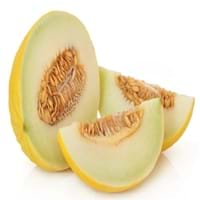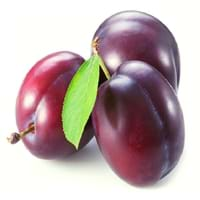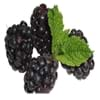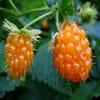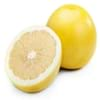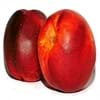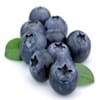Health Benefits
Body hydration, Cancer prevention, Gout treatment, Heart care, Treatment of skin Diseases
Cancer prevention, Cures gastro-intestinal troubles, Heart care, Increase in haemoglobin, Prevents diabetes
General Benefits
Body hydration, Controls blood pressure, Digestive aid, Eye care, Helps in weight loss, Improves eye vision, Maintains healthy cholesterol level, Strengthens bones
Anti-inflammatory properties, Boosts immune system, Digestive aid, Eye care, Flu treatment, Helps in weight loss, Maintains healthy cholesterol level, Treatment of common cold
Skin Benefits
Anti-aging benefits, Brightens and lightens complexion, Hydrates skin, Reduces wrinkles, Treatment of dark spots
Anti-aging benefits, Brightens and lightens complexion, Reduces wrinkles, Skin revitalization, Treatment of dark spots
Hair Benefits
Prevents hair loss, Promotes longer and healthier hair, Protects hair
Prevents hair loss, Promotes longer and healthier hair, Protects hair, Remedy for split ends, Treatment of dandruff
Allergy Symptoms
Abdominal cramps, Breathing difficulty, Coughing, Diarrhea, Hives, Hoarseness, Itching in eyes, Itching of mouth, Itching sensation in throat, Nasal congestion, Nausea, Skin rash, Wheezing
Abdominal pains, Anaphylaxis, Vomiting
Side Effects
Allergic reaction
Allergic reaction
Best Time to Eat
As a snack in the late afternoon, Don't consume at night and before bed, Eat the fresh ones, avoid mixing with any other foods, don't eat after meal., Morning time (before lunch)
As a snack in the late afternoon, Eat the fresh ones, avoid mixing with any other foods, don't eat after meal., Morning time (before lunch)
Vitamin B5 (Pantothenic Acid)
Vitamin C (Ascorbic Acid)
Vitamin K (Phyllochinone)
Phytosterol
Not Available
Calories in Fresh Fruit with Peel
Not Available
Calories in Fresh Fruit without Peel
Not Available
Calories in Canned Form
Not Available
Season
All seasons
Summer
Varieties
Green Flesh, Yellow Rind and Orange Flesh
Victoria, President, Czar, Ariel, Avalon and Oullins Gage
Color
Green, Yellow
Pink, Purple, Red
Inside Color
Light Green
Yellow
Taste
Sweet
Juicy, Sweet, Tart
Grows on
Not Available
Trees
Soil Type
Sandy loam, Well-drained
Clay, Loam, Sandy loam
Climatic Conditions
Warm
Cold
Facts about
- The average weight of honeydew melon is 6 pounds.
- 90% of a honeydew is water.
- In middle east countries, dried and roasted honeydew seeds are consumed as snacks.
- Honeydew melons can be 15-22 mm long.
- In china, plums are used for production of wine.
- A chemical called amygdalin found in plum seeds, turns into toxic compound in human body.
- Plum tree produces fruit 3-5 yrs after planting.
Other Countries
Brazil, Egypt, India, Iran, Mexico, Morocco, Spain, Turkey, United States of America
Bosnia, Chile, India, Iran, Italy, Romania, Serbia, Turkey, United States of America
Top Importer
Not Available
United Kingdom
Top Exporter
Not Available
Chile
Botanical Name
Cucumis melo
Prunus domestica
Synonym
Not Available
Not Available
Subkingdom
Tracheobionta
Tracheobionta
Division
Magnoliophyta
Magnoliophyta
Class
Magnoliopsida
Magnoliopsida
Subclass
Dillenhidae
Rosidae
Order
Cucurbitales
Rosales
Family
Cucurbitaceae
Rosaceae
Species
C. melo
P. domestica
Difference Between Honeydew and Plum
We might think that Honeydew and Plum are similar with respect to nutritional value and health benefits. But the nutrient content of both fruits is different. Honeydew and Plum Facts such as their taste, shape, color, and size are also distinct. The difference between Honeydew and Plum is explained here.
The amount of calories in 100 gm of fresh Honeydew and Plum with peel is Not Available and 46.00 kcal and the amount of calories without peel is 36.00 kcal and Not Available respectively. Thus, Honeydew and Plum belong to Low Calorie Fruits and Low Calorie Fruits category.These fruits might or might not differ with respect to their scientific classification. The order of Honeydew and Plum is Cucurbitales and Rosales respectively. Honeydew belongs to Cucurbitaceae family and Plum belongs to Rosaceae family. Honeydew belongs to Cucumis genus of C. melo species and Plum belongs to Prunus genus of P. domestica species. Beings plants, both fruits belong to Plantae Kingdom.
